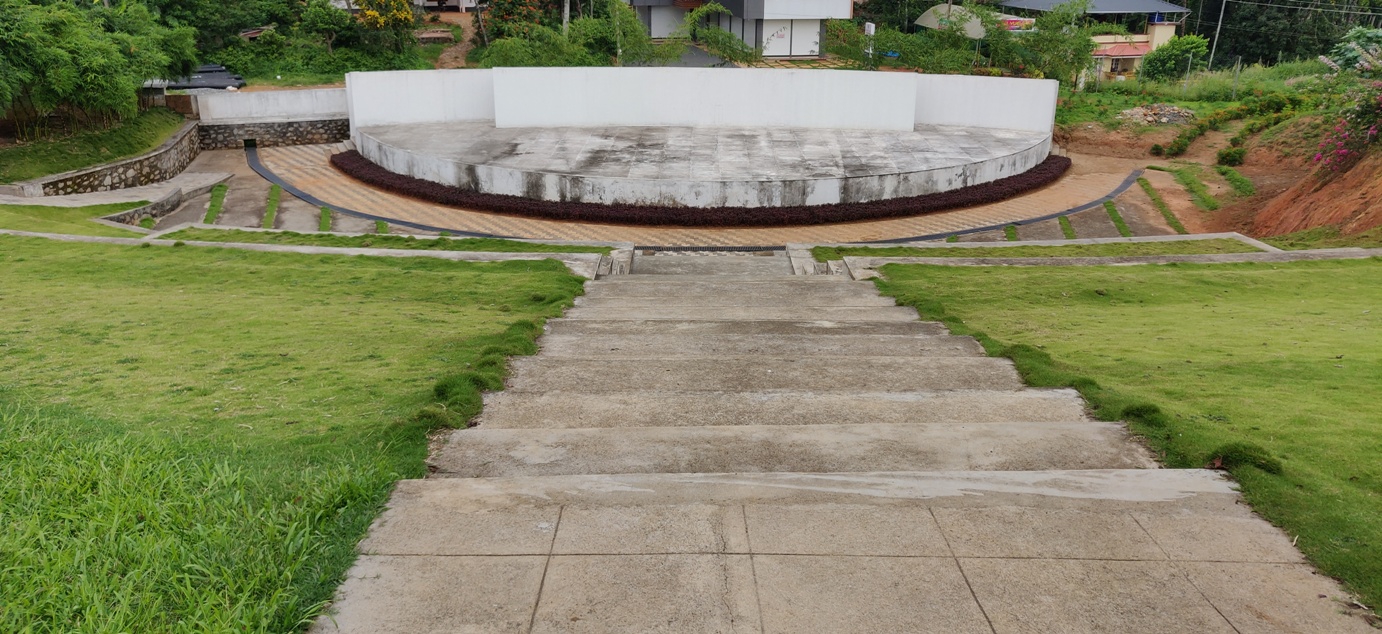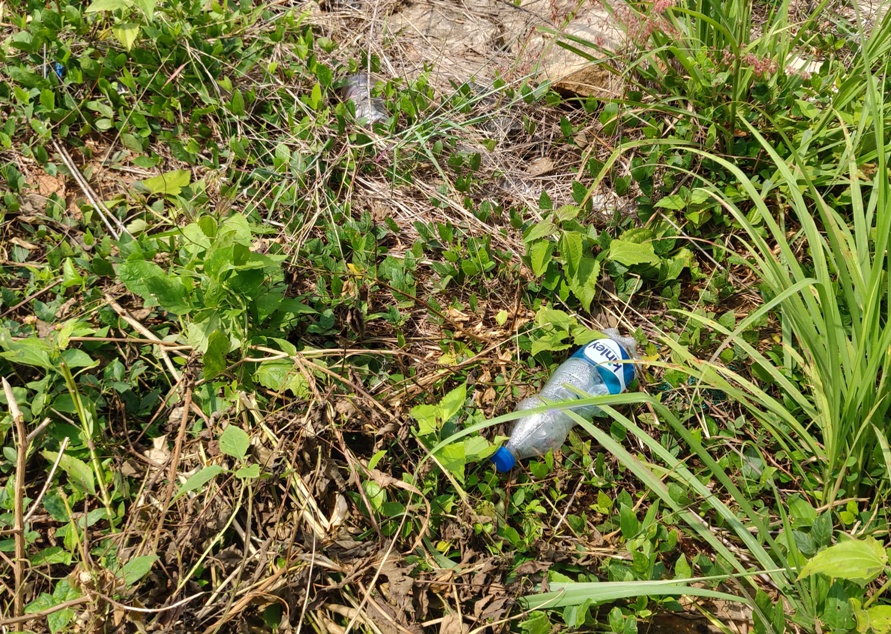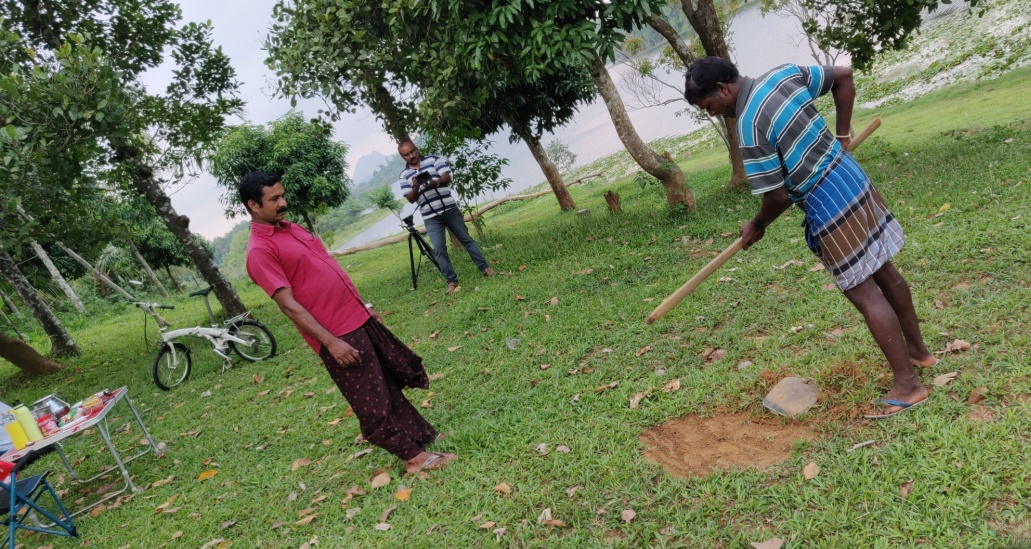Translated by Salini Vineeth
———————————————————
If you ask me to name my favourite district in Kerala, without doubt I would choose Wayanad. I have been in love with Wayanad, ever since my student days in Kannur. Once I started earning, I saved a bit of money and bought some land in Wayanad with the intention of eventually settling down there. However, later I realized that my dream of settling in Wayanad might never materialise.
On the eighth day of the Great Indian Expedition (GIE), we spent the night at Hotel Rose International in Nilambur. On the ninth day, we would travel from Nilambur to Wayanad via the mountain pass called Nadukani Churam. Even though this route doesn’t have a lot of ‘hairpin’ bends, the road often curves almost 260° while circumventing the mountains. One needs to be extremely vigilant while driving along this ghat road. Sometimes it is required to look even through the windows in addition to the windscreen so as not to miss the oncoming traffic.
This route passes through places like Nadukani, Devala, Pandalur and Cherambadi which belong to Tamil Nadu. We plan to re-enter Kerala through the Cherambadi border crossing and reach our destination -Karapuzha- through Ambalavayal.
At the Tamil Nadu border crossing at Nadukani, a thorough inspection of the vehicle was accompanied by a rapid fire round of questions. “Where are you going?” “Where are you coming from?” Throughout this route, there were signages in Tamil about plastic waste. Although we couldn’t understand exactly what was written, we could guess that they were against plastic pollution. However, a small issue lurks around the Nadukani check post. Any plastic bags or bottles found in vehicles, incur a fine of twenty five rupees per item. Some of our equipment was in plastic bags and we were fined ₹50. I couldn’t help but wonder if Tamil Nadu was going overboard with the slogan ‘Plastic Free Nilgiris’. Penalizing travellers for carrying plastic items that they have no intention of throwing away is daylight robbery! There should be a mechanism to detect those who litter forest areas and punish them accordingly. Vehicles that enter the forests of Kerala from Tamil Nadu however, do not face any such hassles.
Those who pass Nadukani be warned. Tamil Nadu is determined to completely eradicate plastic from your lives!
We travelled another ninety kilometres and reached Karapuzha dam. Our plan was to pitch a tent and camp near the catchment area of the dam. Not due to unavailability of lodgings, but solely for the purpose of testing our tent during GIE’s trial run.

Before putting up the tent, we had enough time to take a look around the dam and its surroundings. In the vicinity of Karapuzha dam, there is an extensive tourism project named ‘Mega Tourism’. The entry fee is ₹30 per head and ₹200 for a video camera.


Karapuzha Dam is built across the Karapuzha River, which is a tributary of the famous Kabini River. The construction of this earth dam commenced in 1977 and finished after 27 years of work, in 2004. Agricultural irrigation is the primary function of Karapuzha dam. It is easily identified as an Earth Dam (Embankment Dam). It exhibits all the classic features of an embankment dam including a relatively flat base and gentle upward slope of earth, topped by masonry.

The water level in this dam is relatively low. There are quite a few islets in the reservoir. Some of them appear to be sizable mountains. A beautiful garden is being constructed in this area. There is a children’s park inside the garden, with fully functional recreational equipment. A building designated for restaurants, commercial outlets, and an amphitheatre have also been completed. Once art and cultural programs commence at the amphitheatre, there is no doubt that Karapuzha dam will transform into an important tourist destination in Wayanad.

Apparently, the dam’s spillways and towers for the cable car rides across the river are still under construction. A lot of tourists from Karnataka frequent Karapuzha dam. As a matter of fact, Wayanad functions as an easily accessible tourist district for Kannadigas from Mysore, Bangalore and Kodagu.

Unfortunately, even before the tourism projects are fully established, visitors have started littering the area with plastic. We could see plenty of plastic bottles around the masonry of the dam. What would be the plight of the dam when tourism is in full swing in this area?! There seems to be no system of CCTV surveillance in place to prosecute and penalise offenders. Soon Karapuzha dam will also turn into an abhorrent landfill. Similar to Gavi and Chembra, plastic articles including bottles carried into the dam should be individually accounted, and hefty fines levied on visitors, if they fail to produce the same number of items on exit.

We had to start pitching the tent before nightfall because we needed to capture the process on video. We planned to pitch the tent on the banks of the reservoir, and identified a spot close to the house of a friend named Baiju. Unfortunately we found that the chosen location had been dug up for planting yam therefore, it couldn’t be used. Baiju suggested a better place near the catchment area, close to some tribal settlements.

A narrow road led us to the proposed area for pitching our tent. Due to the recent summer rains, the roads were muddy. Our vehicle skidded a couple of times. However when we reached our destination, it was as picturesque as a movie location. On one side of the road there was a lush green meadow even during the summer. At the end of the gently sloping meadow, was the beautiful catchment lake – dotted with lotus and water lilies. There were pretty little islets in the lake and majestic misty mountains far beyond. On a previous visit, I had rafted to one of those islets. Local people usually let their cows graze on these small patches. The proposed spot for our tent, was shaded by two mango trees, a jackfruit tree and a cashew tree. One of the mango trees had fruited in abundance. As it was government land,we could pluck a few mangoes and relish them if we wanted to.

Appukuttan, a friend of Baiju’s offered to help us with the tent. He belonged to a native tribe, and lived in a small house just across the road. We were able to put the tent up in just twenty minutes. Our camping arrangements were complete with the addition of two foldable chairs and a table. Johar managed to shoot the entire process by fixing cameras at various angles.

Just as we completed pitching the tent, Sr. Shaly Mathew and her toddler nephew passed by. Sr. Shaly, principal of St. Mary’s Higher Secondary School in Uttarakhand, who was currently home on vacation. Her ancestral home was just around the corner. Sr. Shaly told us that most of the surrounding land originally belonged to her family. The Government acquired a large part of it for the dam. Apparently, what is now the dam’s catchment area, used to be paddy fields. Sr. Shaly had fond memories of playing in those fields and crossing them to climb the hills on the other side. . According to her, the area beyond the hills is more picturesque. She told us not to hesitate to ask for any help we needed, and offered to meet us when GIE reached Uttarakhand.

The only remaining part of the trial was cooking our own food. Appukuttan built us a makeshift hearth by digging a pit in the ground. He also provided the firewood. Being fully aware that we could not expect such assistance everywhere we went, we convinced them to leave us to the task of kindling the fire and preparing food.

We decided to make a lentil curry and some tea to go with the bread that we had with us. Placing a pan on the hearth, I attempted to kindle the firewood.
We soon realized that things wouldn’t go as planned. The wind kept putting the fire out. I tried screening the fire from the wind, but even that did now work. The wind was less strong under the trees, but unfortunately we had setup the hearth in an open space. The night was getting thick and we realized that it wasn’t practical to cook. Even if we had a gas stove, it would have been difficult to keep it burning under windy conditions.
There were two solutions to resolve our predicament. We could either walk up to the main road and find an eatery Or, curb our hunger with the single loaf of bread.

As this trip was also a trial of survival tactics, we decided to adopt the latter option. Skipping dinner is no big deal in the larger scheme of things! We may have to use such tactics often while travelling through remote areas of Northern India. Since there was no electricity, there was no point worrying about writing and editing the day’s travelogue. It was a blissful chance to be one with nature. We spent time outside our tent, in the darkness till around ten thirty – listening to the unfamiliar chirping of birds that roosted on the trees around us. They were probably warning their friends of the dangerous species that has camped in their hood!

Johar was skeptical about staying overnight in the tent due to the possibility of reptilian visitors, of the slithering kind, at night. He decided to sleep in our vehicle. . Not even a fly can enter the tent once it is zipped shut. The weather outside was incredible. I entered the tent and secured it with the zips. However, it took me some time to fall asleep. I heard various low, unfamiliar noises outside and was gradually lulled into sleep by the rhythm of those sounds…
(To be continued…)
Edited by Nishad Kaippally
—————————————————————————–
Read the next part of this travelogue here.
View the YouTube Video of this travelogue here.
Read the original Malayalam text of this travelogue here.
Hear the Malayalam sound track of this travelogue here.